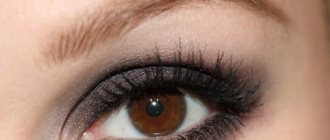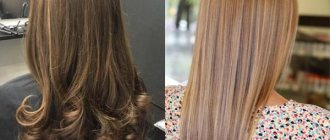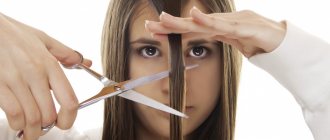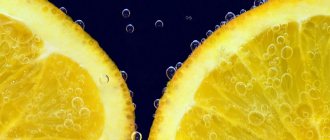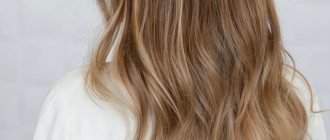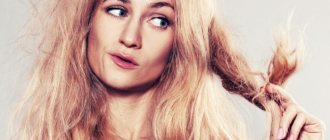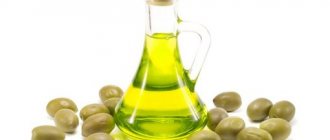Experimenting with hair color is part of women's nature. Coloring in youth is a novelty, a search for fashionable images. With age, when gray hair appears, coloring is a necessity, otherwise even a super beautiful haircut/styling will lose its aesthetics. But coloring procedures, especially regular ones and with the use of persistent ammonia products, destroy the hair structure - the hair shafts become dull, become brittle, and split at the ends. There is an alternative. These are gentle natural hair dyes - popular henna and basma (powders from plants), as well as professional colors without ammonia. Let's figure out how they work, what is myth and what is reality, and whether they should be used instead of the usual ammonia dyes.
What natural hair dyes can and cannot do: truth and myths
Details about henna and basma: composition and benefits of natural hair dyes
Methods of coloring hair with natural dyes
How to choose a dye to match your natural hair color
Henna recipes (without basma) for different final shades
Henna and basma or ammonia-free tonics: which is better?
How to dye your hair naturally without dye
Summary
Let’s dot the i’s right away - coloring hair with natural dyes is not always acceptable. If there has been chemical exposure (bleaching, permanent ammonia coloring/toning, permanent waving/straightening), the new shade is unpredictable. For example, henna can give acid-red curls, and basma - green or blue.
Important . Before switching from chemical to natural hair dye, grow out your locks and cut off the colored part (the permanently curled/straightened part). The process will go faster if you use a care line to accelerate hair growth. Optimally from the professional or pharmacy segment, since almost all mass-market shampoos/balms only cleanse and condition well, and the declared super effects are just advertising.
What natural hair dyes can and cannot do: truth and myths
Natural and ammonia-free dyes can:
- give your curls a rich color for 2–6 weeks;
- improve the condition of hair and scalp.
The healing effect is about natural hair dyes made from henna and basma. They contain nothing but crushed plants that saturate the hair with natural vitamins, minerals, antioxidants and other beneficial elements.
Ammonia-free natural hair dye does not have obvious healing effects, but after using it, the curls really look better. The fact is that the structure of the hair shaft resembles a mosaic, and it is always partially broken - fragments are lost under the influence of the external environment, chemicals, hot styling, etc. The dye replaces the lost fragments in damaged areas: its pigments are “embedded” between the cuticle scales and close the pores on the surface of the rods. The hair becomes thicker, retains moisture inside, frizzes less, and becomes stronger in appearance and touch. The effects last up to 5 weeks and go away as the color fades - cavities appear, causing the rods to thin out again and become more fragile.
Natural and ammonia-free dyes cannot:
- lighten or permanently dye your hair;
- “burn” the shafts and scalp.
Ammonia-free colors and plant-based all-natural hair dyes practically do not change the structure of the rods - before and after coloring, the natural pigment remains in place. The color is fixed only on the surface (in the pores between the cuticle scales), so it is washed out quite quickly: 2–3 weeks after dyeing with henna/basma, 4–5 weeks with ammonia-free products.
To understand, let’s look at how permanent ammonia dye works. Ammonia is a gas that, when dissolved in water, forms ammonium hydroxide (if the product contains ammonium, it is the same as ammonia paint). Ammonium hydroxide is a strong alkali with a pH of 11.5, and strong alkalis forcefully lift the cuticle scales and open paths for the penetration of colored pigment (or brightening hydrogen peroxide) into the very depths of the rods. At the same time, melanin - the natural pigment of hair - is destroyed, making room for dye fragments. The hair is filled with dye from the inside, hence the rich, long-lasting color. Hence the severe damage - with the washout of paint, voids are formed not only in the surface layer, but also in the deep layers of the rods.
Phyto dyes have a neutral pH. Deviations in the acidic or alkaline direction are minimal, that is, henna and basma are not able to significantly change the structure of the hair, much less “burn” the hair shafts and scalp. Ammonia-free paint is more effective in terms of color fastness, but is also gentle. True, the delicacy of the effect depends on the brand - famous manufacturers of professional cosmetics develop truly gentle formulas and guarantee that the composition does not contain aggressive chemicals.
As for obvious lightening with gentle means, this is a myth. Ammonia-free products, even professional ones, lighten a couple of tones at most - with them a brunette will not turn into a blonde. But choosing a similar and at the same time original shade will not be difficult, because the choice of tones is very large.
Plant-based natural hair dyes provide the following colors - red, dark, black and their variations. Light curls (blond, light brown) should be dyed with henna/basma, only in one case - for a radical change in color. Do not believe the advice that says that ordinary henna will give the blonde a delicate honey shade, fill the hair with strength and a spectacular radiant shine. Strength and shine will come, but along with bright red or chestnut color. The roots of such advice are truly reliable information about the beneficial effects of henna on blonde hair. The fact is that in addition to the red phyto dye (from the leaves of lavsonia), there is colorless henna from another plant - cassia obtufolia. It does not color, but has all the beneficial properties of its “colored” counterpart.
Blondes, be careful - don't get confused! We strengthen blond hair not with natural vegetable dye, but with special colorless henna (name “Cassia Henna”).
How to dye your hair without dye
Chemical compounds filling store shelves were not always available, so our grandmothers invented and tested many means to change the color of hair for brunettes, redheads and beauties with blonde hair. Natural hair dyes have many undeniable advantages in the form of their harmlessness to the hair and scalp, but they hold hair color much worse than synthetic ones.
It is easiest for blondes to change their color, because the pigments contained in natural ingredients have little effect on the curls of brunettes. Among the suggested recipes for dark hair with a lightening effect, cinnamon, chamomile (they give an ashen color) and henna, with which the hairstyle takes on a red tint, are suitable. The remaining methods will be less noticeable on the head, but will do an excellent job of covering gray hair.
Henna
Henna in its pure form dyes hair red; the shades depend on the country of origin. Iranian - the shade becomes closer to copper, while Indian gives a purely red glow. At the same time, mixing henna with other components gives completely different tones. Manufacturers of this popular hair dye use ready-made recipes for specific colors. For example, Lash brown gives a clear chestnut tone and a healthy shine to the hair. At the same time, it is prepared very simply:
- Break off one dye cube from a common bar - Lush Henna comes in a shape that looks like a large chocolate bar.
- Grate the resulting cube on a coarse grater.
- Pour boiling water over it, stir until you get a slurry with the consistency of kefir (you get green paint).
- After 5 minutes, apply to your head, leave for several hours, putting a plastic bag on top, and then wrapping a towel.
- Wash off with shampoo and conditioner.
Hair dyed with henna better withstands the effects of an unfavorable environment and remains shiny and healthy. Saturation with trace elements and minerals makes them stronger and stronger. Hair volume, elasticity, and manageability visually increase. To enhance the healing effect of the paint, it is mixed with honey, olive, and essential oils. Henna is the best natural hair dye.
- How to cook dumplings in a pan without them falling apart or sticking together
- What to do if bitten by a wasp. How to provide first aid for a wasp sting at home
- Ukrainian surnames: list and declension
Basma
Basma coloring is used only in conjunction with the base - henna. You will not be able to dye your hair with this dye separately. Depending on the amount of solution and the initial color of the curls, basma gives your hair a dark brown to black tone. To dye with this natural dye, prepare Indian or Iranian henna according to the usual recipe. After this, powder is added to the finished mixture and mixed until smooth. The dye will last up to 4 weeks on the head. Basma is the best hair dye when used with henna.
Linden
Hair coloring with linden is more of a medical nature, because... the result of the manipulation can only be noticeable for blond hair. Dark hairstyles will take on an ashy light brown color. Linden will not cover gray hair or change the color of curls. But it will significantly strengthen your hair and give it a shine that you cannot achieve with any other dye. There are no ready-made solutions for coloring linden-based hairstyles for sale, so you need to do everything yourself.
A pleasant feature of dyeing strands with linden is its absolute harmlessness. This natural curl dye will add a healthy shine to your hair. You can buy linden flowers at the pharmacy. One pack is enough for two medium-length hair colors. Prepare a metal utensil (bowl or mug), gauze, brush, comb.
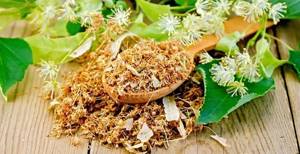
- pour half a pack into a mug - 6 tbsp;
- pour 500 ml of water into a container;
- bring to a boil and let half the water boil over low heat;
- let cool at room temperature;
- apply with a brush to the roots, smear along the entire length with a comb;
- wash off after 40 minutes.
Chamomile
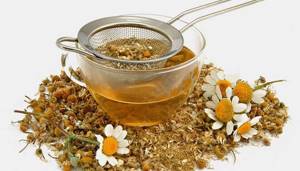
Chamomile dyeing is an effective and safe way to lighten your hair, even hide gray hair. It is possible to change the color by 1-3 tones. The degree of clarification directly depends on how concentrated your initial decoction is:
- Chamomile leaves - 2 large spoons. pour 1 liter of water;
- boil for 5 minutes over low heat;
- cool, strain;
- apply to hair from ends to roots;
- let dry, do not wipe
Onion skins
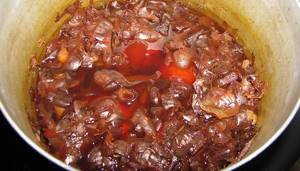
Dyeing with onion peels is not suitable for owners of dark hair, because... the color will remain virtually unchanged. Blondes will get a pleasant, natural, golden shade to their hairstyle. It is very simple to prepare a composition for coloring with onion peels:
- 100 grams of onion peel (dry, yellow part) pour 0.5 liters of water;
- boil for half an hour;
- let cool;
- apply to the head every day;
- To enhance the coloring effect, it would be good to add 30 g of glycerin to the finished decoction.
Cinnamon
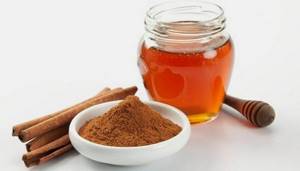
Cinnamon has a pronounced strengthening effect on the scalp and the condition of the hair follicles. Hair coloring with this spice is done mainly on dark curls, because... This natural hair dye is a strong natural lightener and can make you 1-2 shades brighter. Preparing the solution will not take you much time and money. Prepare 100 g honey, 100 g cinnamon, 60 g water.
- melt honey and mix with water and cinnamon;
- apply the still warm mixture to the strands along the entire length;
- put on a plastic bag and wrap it with a towel (put on a hat);
- keep for at least 4 hours (ideally overnight);
- Wash off with shampoo and conditioner.
- Normal blood test for platelets
- How to distribute Wi-Fi from an iPhone
- Biorevitalization - what is it, the cost of the procedure. Reviews about biorevitalization, before and after photos
Tea
Tea contains many antioxidants, tannin and other substances that have a positive effect on both the skin and the hair structure itself. Black tea is used both in combination with henna and as an independent dye. It is possible to dye only light or light brown strands with tea into a beautiful dark color. Preparation of the solution:
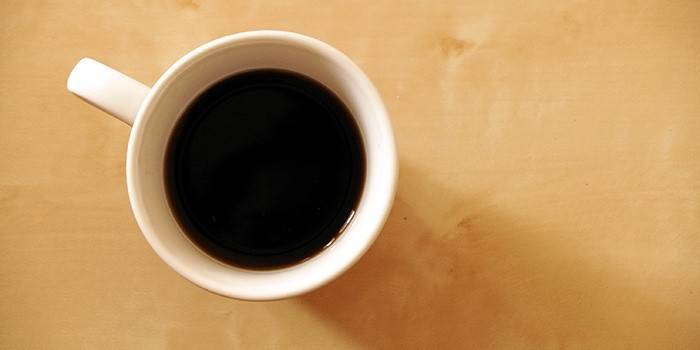
- Pour 2 large spoons of tea into 500 ml of boiling water;
- cook over low heat for 20 minutes;
- cool, strain;
- apply the decoction to your head, wrap it in polyethylene, and put a warm hat on top;
- keep on your head for 40 minutes, then rinse.
You can play with shades by adding cocoa or instant coffee to the finished strained decoction. Be careful to use only sugar-free powders. Cocoa gives your hair a mahogany tone, while coffee combined with tea gives your hair more gold. The effect of coloring will last 1-2 weeks depending on the frequency of washing.
With coffee
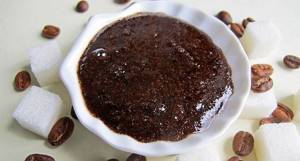
Coffee coloring is ideal for owners of brown and dark brown hair. On this color, the aromatic grains give the greatest shine and visible strength. Blondes are better off not experimenting with this type of coloring, because... the effect of uneven application of pigment on the curls is possible and stains will result. Only natural ground coffee is used for painting. Just boil the drink in a Turkish pot, cool it along with the grounds and apply it to damp hair for 30 minutes. After this, rinse with shampoo and conditioner.
Nut
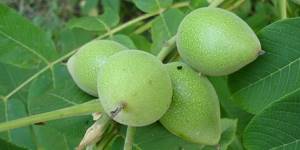
The walnut contains very strong coloring and tannin substances. In terms of durability, this is the most powerful natural hair dye after henna. The effect of painting can last up to 3 weeks. Only young, unripe walnuts are suitable for coloring. Grind the peel of such fruits with a meat grinder, dilute with water until it becomes sour cream and apply to strands for 20 minutes. If you want to dye your hair black, keep the dye on two to three times longer.
Details about henna and basma: composition and benefits of natural hair dyes
Firstly, these are the most popular herbal products for tinting curls. Because these are the most environmentally friendly natural hair dyes - they contain exclusively plant raw materials, rich in healing microelements, from vitamins and minerals to antioxidants and flavonoids. In addition, the plants are pre-dried, and where there is no moisture, preservatives and other chemicals are not needed.
Henna is a powder dye made from the dry leaves of Lawsonia (Lausonia) non-prickly. This shrub grows in countries with hot, dry climates. In India, North Africa, and the Arab Peninsula, henna has a centuries-old history. It was and is used as a body dye (local women are scorching brunettes, and on dark hair, henna gives a barely noticeable reddish tint). Fair-haired Europeans used henna to color their hair: with it, blonde hair turns into a carrot shade, light brown hair becomes bright red, and dark brown hair acquires a rich chestnut tone.
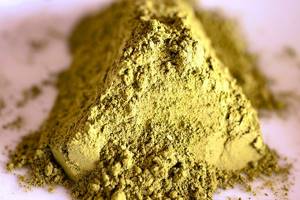
The healing qualities of henna are valued on all continents. It not only gives color, it helps your curls become stronger, shinier and healthier. It compacts the hair shafts and has a beneficial effect on the skin and hair follicles. With regular henna dyeing, hair growth accelerates, hair loss decreases, the functioning of the sebaceous glands is normalized, and both dry and oily dandruff disappears.
You can evaluate the quality of henna by the color of the powder. The highest category paint has a light green tint. This means that the leaves were collected in the summer, when the sun is especially hot and dries the raw materials especially quickly - the maximum amount of chlorophyll (the green pigment of plants) remains in the composition; when dyeing, it is responsible for the color saturation. Middle and lower grades are gray and brown due to slow drying: they have little chlorophyll, so coloring may not give characteristic effects. Also pay attention to the degree of grinding - fine powder without large inclusions gives off more pigment, and it is also easier to apply and wash off.
Basma is a powder paint made from the leaves of the indigofera plant. This is a tropical legume native to India. It has been used here for thousands of years; the first mentions of basma date back to the 7th century BC. e. The product was and is valued as a textile dye for its rich indigo color (between dark blue and violet). Basma entered the hairdressing segment both for its ability to produce a rich color (dark chestnut - blue black) and for its medicinal properties. It stimulates hair growth, tightens the structure of hair shafts and fills them with shine, strengthens follicles and effectively fights dandruff.
The original color of a quality product is marsh (grayish-green). If the package contains powder with a clear yellow tint, it means the dye is not fresh. Experimenting with such basma is dangerous (in terms of aesthetics); as a result of coloring, the hair may turn green. However, any powder, both fresh and old, is “dangerous,” especially for beginners. You cannot use basma separately without henna, otherwise it will have a green tint. The proportions of the components must not be violated, otherwise the color will be unpredictable. Moreover, the exposure time will have to be selected personally (and for henna too).
Methods of coloring hair with natural dyes
The general rule for all delicate dyes is to protect clothing and skin. They are only relatively unstable. Vegetable or ammonia-free dye is washed off from natural hair faster compared to ammonia-based products. But stains from clothing are unlikely to be completely removed, and marks on the skin can last for several days. Therefore, before coloring, apply any cosmetic cream to the ears and hair growth border - it will prevent the henna from being absorbed into the epidermis.
The general recipe for phyto dyes is to take 100 g of powder for every 10 cm of length, mix in a glass container with hot water (70–80°C). You need enough liquid to form a paste similar to thick sour cream. You can add a few drops of lavender or ylang-ylang essential oil to henna - they will make the color deeper and brighter. You can add an yolk or a spoonful of vegetable oil to the mixture of henna and basma - the consistency will be softer, and the composition will be distributed more evenly when dyeing.
The order of applying paint is the back of the head, sides, crown (on clean hair). The exposure time must be selected personally, depending on the color/condition of the curls and the desired result (you will have to experiment). It is recommended to wash off the dye simply with warm water without shampoo; do not wash your hair for 2 days after dyeing - this way the shade will last longer.
Natural dyes for lightening hair
The most harmless and healthy coloring agent is considered to be a concentrated infusion of Roman chamomile. With it you will not only strengthen your hair roots, but also remove dandruff, and also get your curls one to three shades lighter.
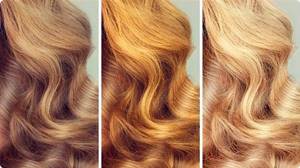
- The simplest recipe for chamomile decoction: dried flowers (50g) are poured with boiling water (500ml), left for 40 minutes. After filtering, carefully treat the strands with the infusion, then, as I already wrote, pull a cap over your head, wrap it in a towel and wait 2-3 hours. After the procedure, there is no need to rinse the infusion from your hair.
It's great to combine chamomile with other ingredients - this will allow you to create very interesting shades.
- Pour a liter of water into nettle (or sage leaves of your choice) and chamomile (take 1 tbsp each), let stand for 30-40 minutes, filter and treat the curls with the infusion. Then wrap your head in a towel or scarf for 15-20 minutes. After the hair is dried, it is treated with chamomile infusion twice with a break of 1 hour.
- Dried flowers (25g) are poured with 100ml of water, after boiling, the mixture is boiled for 15 minutes. and let cool. Add 1 tsp to the filtered broth. honey After applying the mixture to the curls, wrap them in a towel, after putting on a cap. In 30 min. wash off with warm water.
Lemon with honey and olive oil also gives a good shade to your hair:
- You need to mix the juice of 1/2 lemon with 1 tbsp. honey and the same amount of olive oil. Apply this mask to your hair for 2-4 hours, wrapping your hair tightly with cling film and a towel. Wash off with water and shampoo.
See how cinnamon lightens hair:
Golden tone
For a golden hue, try these recipes:
- Each time you wash your hair, rinse your hair with a strong chamomile infusion (200g of dried herbs, poured 1 liter of boiling water).
- Prepare a mixture of chamomile infusion (1 tbsp dried leaves, poured 500 ml of boiling water) and hot henna paste.
- You can add linden inflorescences to the concentrated chamomile infusion (take 80g of chamomile for 1 liter of water) (it is good to use for dry and normal hair).
- Depending on the length of the hair, pour 2-6 tbsp. dried and powdered rhubarb root with cold water (200 ml) and boil, stirring constantly, for 15-20 minutes. The thickened broth is removed from the heat and filtered as it cools. Used for coloring as a rinse after washing hair.
- Rinsing with an infusion of calendula petals gives your curls a golden hue.
- Pour 200 ml of boiling water over a handful of onion peels, let stand for 20-30 minutes. and rub the filtered mixture into clean hair.
- A concentrated decoction of onion peels will give your curls a more saturated color: 2-4 tbsp. husks, pour 500 ml of water, boil for 15 minutes. and put 1 tbsp into the cooled broth. glycerin.
Ash shade
An ashy shade can be obtained if:
- rinse your hair with a decoction of parsley roots: boil for 20 minutes. two large plant roots in 1 liter. water and rinse your strands with this product;
- rinse your hair with rhubarb decoction: pour 500g of crushed raw material with cold water (500ml), stirring, and cook until the total amount is reduced by four times. Rinse clean hair with the cooled and filtered broth.
How to choose a dye to match your natural hair color
On any curls, henna gives red shades, and a mixture of henna and basma gives darker shades, from chestnut to black. You can use henna-basma in two ways - in the form of a mixture or alternately, first henna, then basma. Naturally, if you dye light or gray hair with natural dye, you will get a bright color. The result for brown-haired women and brunettes is coverage of gray hair and a beautiful tint.
The table will help you choose the ratio of phyto dyes to match your curl color (the results are approximate):
| Your hair | 2 parts henna + 1 part basma | 1 part henna + 1 part basma | 1 part henna + 2 parts basma |
| Blonde/Grey | Light bronze with reddish tint | Medium bronze with reddish tint | Dark bronze (darker with each procedure) |
| Light brown | Light chestnut without red | Medium chestnut without red | Dark chestnut (darker with each procedure) |
| Redheads | Red chestnut | Medium chestnut | Dark chestnut in 1 procedure |
| Medium blond or brown-haired | Medium chestnut | Bright chestnut | Dark chestnut |
| Dark blond or brown-haired | Bright chestnut | Dark chestnut with reddish | Dark chestnut without red |
| Black | Warm black with red | Warm black with chestnut tone | Rich black with chestnut tones |
If you dye your hair first with henna and then with basma, be guided by the recommended exposure time for each composition:
| Desired color | Hold henna, min. | Hold basma, min. |
| Light brown-haired | 10 | 5 |
| Brown-haired | 20 | 15 |
| Dark brown | 40 | 30 |
| Light chestnut | 25 | 20 |
| Dark chestnut | 40 | 45 |
| Black | 60 | 60 |
Rules for dyeing at home
In order for the procedure to be successful and bring exactly the result that the woman expects, you need to follow some rules:
- Use dyes only on natural hair. Here we are talking about the fact that if you have already dyed your hair with another dye, then it will be impossible to predict what color you will get in the end. You should also not use such dyes if you have recently had a perm. During this period, the strands are very dry and react differently to coloring. It is also not recommended to apply makeup before curling. These two processes cannot coexist on the same head.
- Before you start painting, wash your hair thoroughly. Natural dye is applied only to clean curls.
- After the required time has been maintained, carefully wash off the paint. Do this until the water becomes clear. Otherwise, the paint will continue to work and ruin the success of the procedure.
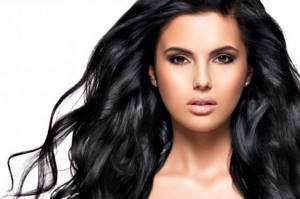
Basma is an oriental flavor
- Natural dyes are durable, that is, they hold the color firmly and for a long time. And until the dye loses its expression, you will not be able to dye your hair any other color. So those women who like to repaint their hair frequently should think carefully before using this method of dyeing.
- Both natural dyes for dark hair and dyes for light tones react sharply to external factors, for example, contact with sea water. In this situation, henna-dyed hair turns green. So advice to vacationers: do not carry out the procedure before vacation if you are going to go to warm countries.
- Like any other procedure, coloring cannot be performed by people who are allergic to certain components or who suffer from skin diseases.
Now let's look at several coloring options separately.

Henna recipes (without basma) for different final shades
Here are the methods for preparing the paint, and you will have to choose the exposure time yourself - the longer, the richer and darker the color. The recipes (and henna in general) are relevant for hair with light and medium shades; dark brown and brunette only acquire a tint.
- Redhead - henna powder, hot water and a glass of lemon juice; leave in a warm place for 10–12 hours.
- Light brown with gold - henna, 100 ml of strong natural coffee (cold); leave for 4 hours, add a spoonful of vegetable oil before coloring.
- Copper - henna, hot water, 3 tbsp. spoons of ground cloves, 3 drops of lavender oil; There is no need to insist, keep it on your hair for about 2 hours.
Henna dyeing
For the procedure for medium length hair you will need:
- henna – 25 g;
- hot water (100 ml).
The procedure includes the following steps:
- Henna is poured with water and mixed until completely dissolved. Experts recommend adding water little by little. The finished mixture is similar to liquid sour cream.
- Allow the composition to cool to room temperature, then apply it along the entire length of the hair.
- Cover your head with a shower cap.
- Leave the mixture on your hair for the specified amount of time (you can find it on the package).
At the end of the time, wash your hair thoroughly using shampoo.
Henna and basma or ammonia-free tonics: which is better?
Delicate ammonia-free dyes offer a choice of tones for every taste and for any initial hair color, from noble silver blond to blue-black. And this is the main advantage over henna and basma, which have a limited number of tones. In addition, the shade lasts longer - on average 5 weeks.
Please note that it is better to choose professional natural hair dyes - premium cosmetics brands guarantee the absence of ammonia. And instead of synthetic dyes, phyto pigments are used here - the popular henna and basma, as well as cornflower, sage, cocoa, beets, nettle, etc. In addition, the products do not contain parabens (harmful artificial preservatives). If there are chemical components, then their quantity is minimal, and nothing is hidden - the full composition must be indicated on the packaging. You can find good paint in the assortment of Londa, Revlon, Aveda, Natulique, Organic Systems and other well-known manufacturers.
Together with tinting, you can significantly improve the condition of your curls (temporarily, until the pigment is completely washed out). Ammonia-free hair dyes with natural oils provide many beneficial effects - nourish and moisturize the hair shafts, saturate the curls with radiant shine. In addition to oils, formulas may contain other active elements - phytoextracts, vitamin-mineral and protein complexes.
The method of use is simple - prepare the composition according to the instructions, apply to clean, damp hair (back of the head, sides, crown), cover with plastic, leave for 1-2 hours, rinse thoroughly with water without shampoo.
Phyto-dyes and their differences from conventional chemical hair dyes
In addition to harmful ammonia, modern coloring agents contain many other dangerous components, such as resorcinol, diaminobenzene, methyltoluene and others. They also have a negative impact on the human body. Manufacturers have not yet succeeded in replacing them with more gentle substances.
However, the cosmetics sector does not stand still and phytocolors have now appeared. These are 100% natural products that make coloring not only safe, but also useful. The most popular brands of organic hair dyes include:
- Logona.
- Aasha.
- Phytonics.
How to dye your hair naturally without dye
Henna, basma, and ammonia-free products are not suitable for everyone. To the question - are there natural hair dyes on sale that do not cause allergies - one cannot answer “yes” unequivocally. Everything is purely individual. Do a test before using any product. Apply silent dye to the elbow area - if there is no reaction after a couple of hours, the product is safe for you.
It is quite possible that the paints considered are not your option: you are allergic to ammonia-free products, you are a true eco-adept, but the colors of henna and basma are not suitable for you. No problem - many plants provide shades:
- lemon and chamomile - lighten blondes;
- black tea, coffee, nettle, sage - refresh chestnut tone;
- tomato juice and hibiscus - “light a fire” in red curls;
- black walnut powder - removes gray hair on brunettes.
Types of natural hair dyes
Even grandmothers put their hair in order, using such products as:
- "henna",
- "basma"
- "coloring decoctions".
The unsurpassed advantage of these products is that their absolute naturalness does not cause any harm to the hair structure, but rather nourishes and enriches it.
After you have completed the coloring procedure, there is no special need to make special restorative masks or apply other restorative products. But after dyeing with even the most expensive paint, the strands are subjected to chemical treatment and suffer in any case.
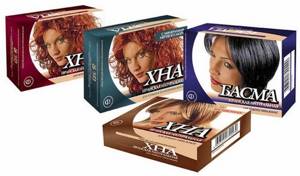
Henna is nature's gift for hair
